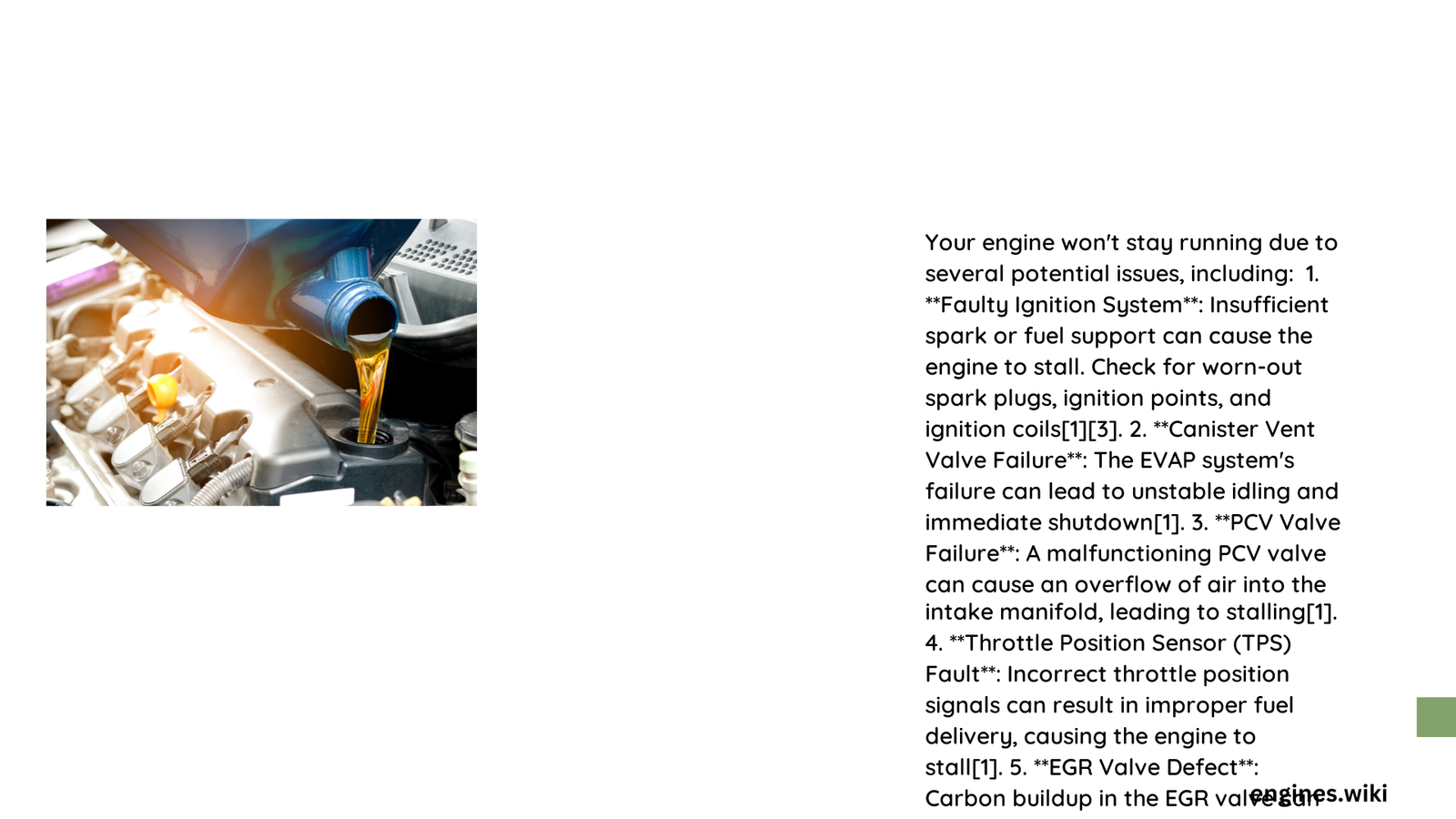When your vehicle’s engine unexpectedly dies or struggles to maintain power, it can be frustrating and potentially dangerous. Engine stalling occurs due to complex interactions between fuel, electrical, and mechanical systems, often stemming from multiple potential causes that require systematic diagnosis and precise troubleshooting techniques. Understanding these intricate mechanisms can help you identify and resolve the underlying issues preventing your engine from running smoothly.
What Causes Engine to Stop Running?
How Do Fuel Supply Problems Trigger Engine Stalling?
Fuel system complications represent a primary culprit behind engine performance interruptions. Several critical components can compromise fuel delivery:
Fuel Pump Failure Indicators
- Inconsistent fuel pressure (below 30 PSI)
- Whining noise from fuel tank area
- Sudden power loss during acceleration
- Difficulty starting the vehicle
| Fuel System Component | Potential Issue | Replacement Cost |
|---|---|---|
| Fuel Pump | Electrical failure | $200-$500 |
| Fuel Filter | Clogged/Restricted | $50-$150 |
| Fuel Injectors | Blocked/Malfunctioning | $150-$400 |
What Electrical Issues Interrupt Engine Performance?
Electrical system malfunctions can dramatically impact engine stability:
Spark Plug Degradation
- Uneven spark generation
- Misfires during acceleration
- Reduced fuel efficiency
- Irregular engine idling
Key Diagnostic Steps:
1. Check spark plug gap (0.028-0.060 inches)
2. Measure resistance with multimeter
3. Inspect for visible wear or carbon buildup
How Do Sensor Failures Contribute to Engine Stalling?
Modern vehicles rely on numerous sensors to maintain optimal performance:
Critical Sensor Malfunctions
- Mass airflow sensor
- Oxygen sensor
- Crankshaft position sensor
- Throttle position sensor
Potential Symptoms:
– Erratic engine behavior
– Unexpected power loss
– Check engine light activation
– Reduced fuel economy
What Role Do Mechanical Components Play?
Mechanical integrity significantly influences engine stability:
Potential Mechanical Failure Points
- Vacuum leaks
- Timing belt/chain issues
- Compression problems
- Exhaust system restrictions
How to Diagnose Engine Stalling?
Recommended Diagnostic Tools
- OBD-II scanner
- Multimeter
- Fuel pressure gauge
- Spark tester
Professional Diagnostic Process:
1. Connect OBD-II scanner
2. Read error codes
3. Perform comprehensive system tests
4. Isolate specific failure mechanisms
When Should You Seek Professional Help?
Warning Signs Requiring Immediate Professional Inspection:
– Frequent, unpredictable stalling
– Multiple system failures
– Complex electrical issues
– Persistent check engine light
Conclusion

Resolving engine stalling requires methodical investigation, understanding complex automotive systems, and potentially professional intervention. Regular maintenance, timely diagnostics, and proactive component replacement can significantly reduce unexpected engine performance interruptions.
Reference:
– SAE International Automotive Research
– ASE Automotive Technician Resources
– Society of Automotive Engineers
